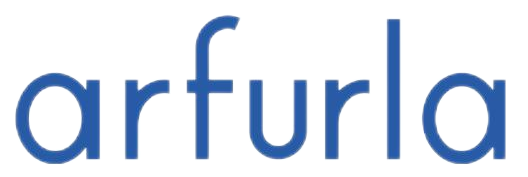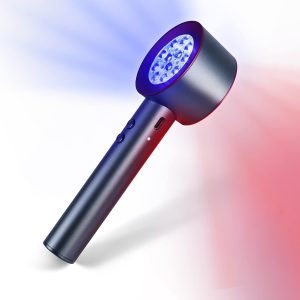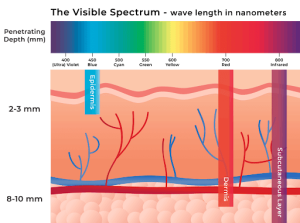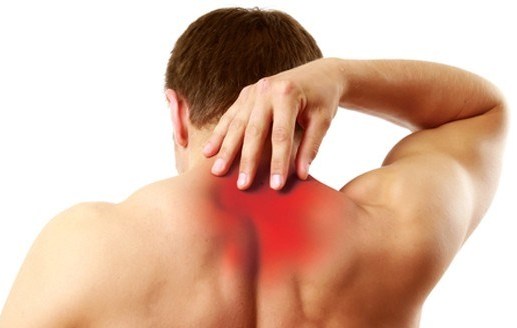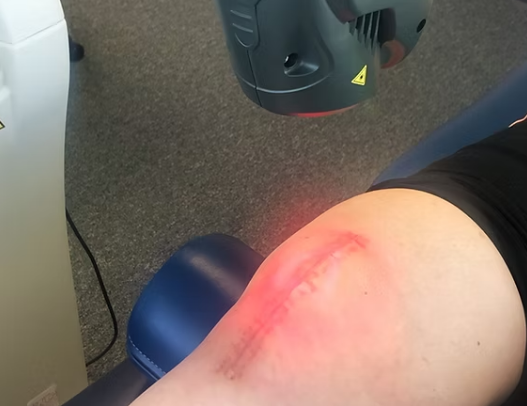Regarding physiotherapy, we all know that many products with different technologies are available on the market for therapeutic purposes, such as LED machines, SHOCKWAVE machines, acupuncture machines, and laser therapy instruments. Today, we will mainly introduce the differences between LED physiotherapy and laser physiotherapy in terms of principles, effects, and technology, hoping to help you choose the right product for you.
Both LED phototherapy and laser physiotherapy belong to “photobiological modulation therapy,” but they differ significantly in their working principles, penetration depth, and application effects.
First, the principle of LED physiotherapy is: it uses light-emitting diodes to emit incoherent, broadband, general light. It mainly works through light modulation. We know that LEDs have many different wavelengths (such as red light, blue light, and near-infrared light) that are absorbed by the mitochondria in skin cells. This light has low energy, a large divergence angle, and a wide coverage area, making it impossible to concentrate energy on a specific treatment area.
We know that mitochondria are the “energy factories” of cells. A key molecule within them—cytochrome C oxidase—promotes the synthesis of adenosine triphosphate (ATP) after absorbing light energy, thereby increasing cellular energy. This triggers a series of beneficial biological effects, such as: promoting cell metabolism and proliferation; accelerating blood circulation; alleviating and reducing inflammatory symptoms; and stimulating the production of collagen and elastin.
In simple terms, LED light is like a gentle rain of light, nourishing skin tissue over a large area, “recharging” cells, and mobilizing their own repair capabilities. Therefore, it is suitable for large-area treatments and cases where wounds or pain are not severe, and is commonly used in hospitals.
Let’s discuss the principles of laser therapy: It utilizes stimulated emission amplification to generate coherent, monochromatic, high-energy-density light. This makes the laser beam highly concentrated, with almost no divergence, allowing for more effective concentration of energy on a specific treatment area. Besides possessing a light-modulating effect similar to LEDs, the key to lasers (especially high-intensity lasers) lies in their photochemical and photothermal effects.
Compared to the similar mechanism of action of LEDs, laser therapy, due to its coherence, has more concentrated energy, theoretically providing more precise and effective stimulation to deeper targets. This makes it suitable for rapid postoperative wound healing and rapid pain relief, accelerating recovery.
With high-intensity lasers: 810nm 980nm diode Laser therapy produces a significant thermal effect, used for treating deeper tissues. This microthermal effect can relax muscles, relieve pain, and increase tissue elasticity. It is commonly used in physical therapy for deep inflammation and pain management because laser energy can penetrate 3-5 centimeters under the skin, with higher energy resulting in stronger penetration. This allows for precise treatment of deep-seated inflammation and wound healing, alleviating pain and suffering caused by deep-seated wounds.
To put it simply, a laser is like a “precise optical scalpel” or a “deep massager,” concentrating energy to penetrate deeper tissues for more precise and powerful intervention. Therefore, it’s more popular with patented physiotherapy clinics and specialized hospitals. Some people even use it for personal treatment to alleviate pain. Furthermore, buying one machine is more economical than weekly clinic visits. We have an American client who, along with his family, frequently suffered from pain due to illness. Since purchasing this laser, it has saved his entire family from weekly clinic visits and significantly reduced their expenses.
This product is very simple to use and very convenient to operate.
810nm and 980nm are the common use wavelength on laser therapy treatment and pain relief treatment, also for recovery from all kinds of wounds, surgery and so on
810nm 980nm diode laser Class IV laser physiotherapy equipment is powered by a 30.0 Watt GaAlAs Diode Laser/60W, one of the most powerful available, emitting a continuous wave at 980nm/810nm (near infra-red wavelength) for maximum bio-stimulation. This is a powerful, non-addictive, and side-effect-free form of pain management that decreases inflammation and scar tissue formation. These therapeutic qualities enable laser therapy to accelerate wound healing and reduce injury recovery time.
Therefore, compared to LED, 810nm 980nm diode laser therapy has the following advantages:
* Stronger penetration: It can precisely target deep tissues such as muscles, ligaments, nerves, and bones.
* Greater efficacy: The energy is more concentrated, and the photobiomodulation effect is more significant, especially in analgesia and anti-inflammation.
* Precise treatment: It can target specific acupoints or pain points.
* Faster results: It is generally more effective than LED in pain management and the treatment of deep inflammation.
* Pain management: Cervical spondylosis, lumbar disc herniation, arthritis, tendinitis, myofascial pain syndrome, etc.
* Sports medicine: Muscle strains, ligament injuries, sprains, fatigue relief, and accelerated recovery.
* Neuropathic pain: Trigeminal neuralgia, postherpetic neuralgia, etc.
* Deep inflammation: Bursitis, tenosynovitis, etc.
* Wound healing: Promotes wound healing, especially effective in repairing deep tissues.
These and many other advantages make it suitable for all clinics, beauty salons, hospitals, and individuals or families. This product is safe and easy to operate; we will provide face-to-face video training.
Here is the more detailed information for our 980nm 810nm diode laser machine introduction:
https://www.arfurlamed.com/afl-medical-12-in-1/physiotherapy-laser-treatment/
For more information, please follow our social media accounts:
https://www.instagram.com/arfurla980nm1470nmendolaser/
https://www.facebook.com/Arfurlalaser
WhatsApp: 0086 18301023578
Email: info@arfurla.com
Another website: www.arfurla.com
